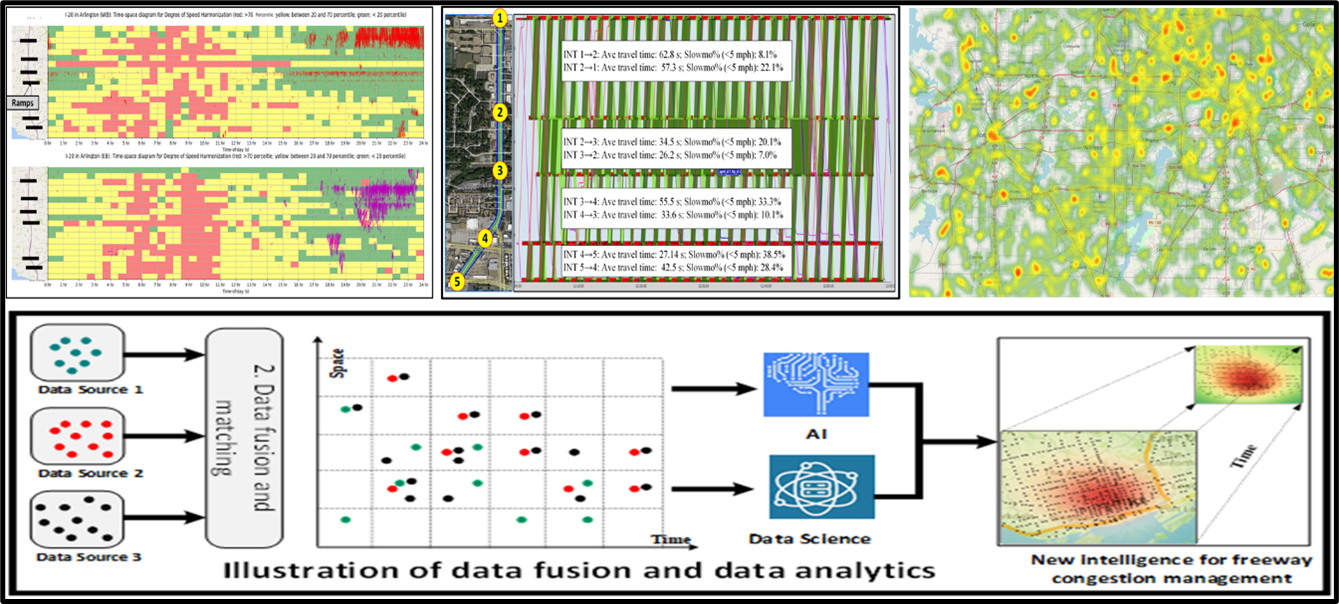Research in ACTION LAB at University of Texas at Arlington
Smart Traffic Signal Systems and ITS
Big data and Artificial Intelligent
Nighttime Supplmental Light for Crossing VRUs at Intersecitons, $100,000, 2024~ 2026
Sponsor: TxDOT/USDOT Intersection Safety Challenge)
PI: Dr. Taylor Li
Description:This project is to catalyze a LiDAR demonstration of Safety-centric Traffic Signal Operations to TxDOT.
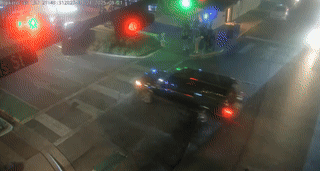
Identifying Near-Misses Using LiDAR, $220,000, 2022~ 2023
Sponsor: Utah DOT (UTA share:$110,000 (50%))
PI: Drs. Taylor Li, Terry Yang (UMD) and Peter Zhu (UU)
Description:This project is the Phase 2 of the LiDAR project. It will scale up the efforts in Phase 1 and test multiple functions developed by Dr. Li. It will focus on capturing multiple types of real-time near misses at a signalized intersection in Salt Lake City. It will also explore disruptive traffic control strategies to provide instantaneous protections for vulnerable road users. In a longer term, this project aims to maximize the potential of object tracking technologies in traffic signal operations.

Developing a Deep-Learning Tool to collect traffic data from city cameras, $25,813, 2022~ 2023
Sponsor: City of Arlington
PI: Dr. Taylor Li
Description: Dr.Li's team developed an AI-empowered Video Analytics tool for Smart Transportation o AVAST. AVAST can retrieve useful information from existing city cameras, such as vehicle counts and near-mises. Like many cities, Arlington has installed hundreds of traffic and surveillance cameras over years, but they are only used occasionally. In this project, UTA evaluated the performance of AVAST with various types of city cameras in counting and classifying vehicles. The accuracy could reach up to 99%. The AVAST can also capture and record clips of near misses from recorded videos or livestreams.
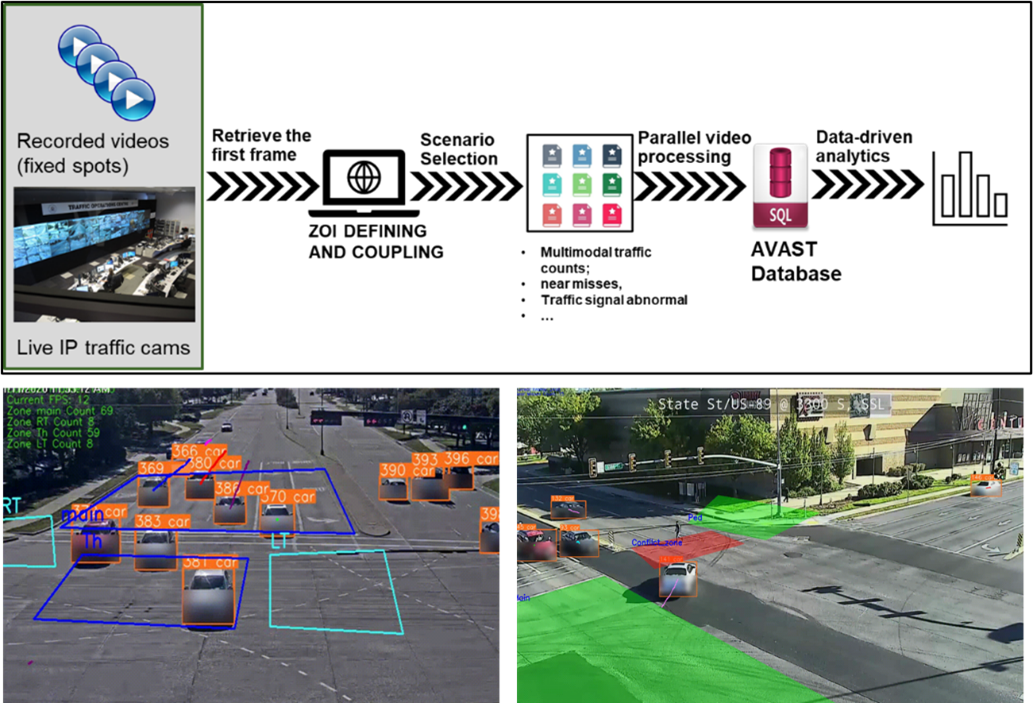
Improving traffic signal system planning, design, and management with big-data-enhanced Automated Traffic Signal Performance Monitoring (ATSPM) system, $292,013.50, Sep-2022 ~ Aug-2024
Sponsor: Texas DOT (TxDOT)
PI:Dr. Taylor Li; Co-PI: Stephen Mattingly (UTA)
Description:In this project, UTA will develop several software tools to couple traffic simulation with real-world ATSPM systems. VISSIM will be used as the data engine to generate data necessary for ATSPM systems to evaluate new traffic signal plans under complex situations (e.g., with preemptions, heavy pedestrians or TSP). This project is expected to bridge the gap between traffic signal design and traffic signal performance evaluation (post-deployment). System Architecture and zoomable "Groundtruth" Time-Space-Diagram (16 intersections, 10% penetration rate of all simulated vehicles, 1-s internval) are shown below.

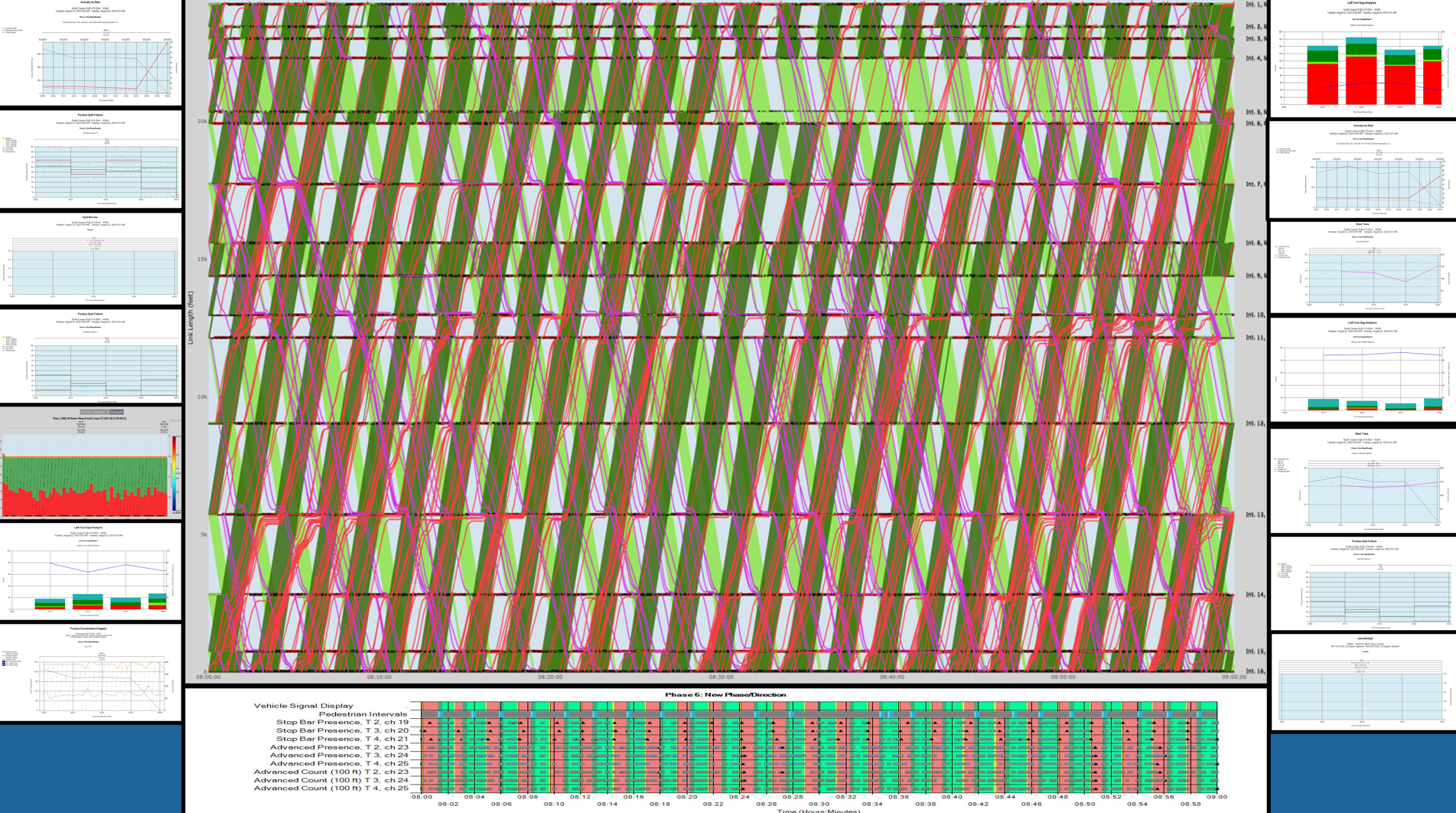
Utilizing LIDAR sensors to detect pedestrian movements at signalized intersections, $60,000, 2021~ 2022
Sponsor: Utah DOT (UTA share: $30,000 (50%))
PI:Dr. Taylor Li (UTA) and Terry Yang (formerly the Univ. of Utah, the Univ. of Maryland now)
Description:In this project, Dr. Li worked with Dr. Yang and deployed a novel LiDAR-based pedestrian tracking system at a signalized intersection in Salt Lake City. In this project, Dr. Li transformed a general LiDAR sensing solution to a traffic multimodal data collection system. This project is one of three parallel LiDAR projects in Utah DOT to help better understand the LiDAR sensors’ potential for traffic operations and connected vehicle infrastructure. The project was delivered well. Utah DOT decided to expand this project (Phase II) to test more traffic solutions developed by UTA.

Using LIDAR sensors to study pedestrian behaviors and safety improvement at signalized intersections, $121,273.00, 2020 – 2021
Sponsor: USDOT national UTC (NITC)
PI: Dr. Taylor Li; Co-PI: Dr. Terry Yang (Univ. of U) and Dr. Sirisha Kothuri (Portland State Univ.)
Description: In this project, Dr. Li transformed a generic LiDAR sensing solution to traffic data collecting solution. Thanks to the help from Cities of Irving and Arlington, the project team could use the live TOC environment to develop and test the algorithm. The provided live environment greatly facilitate the development. Case studies also showed that the pedestrian behaviors at intersections may differ from what the existing guideline recommends.

Assisting Performance Evaluations of an Adaptive Traffic Signal system (“SynchroGreen”) at five signalized intersections on and near Preston Road in City of Frisco, $40,000.00, 2020 - 2021
Sponsor: City of Frisco
PI: Dr. Taylor Li; Co-PI: Dr. James Williams (UTA)
Description: In this project, Dr. Li’s team installed its own big-data-driven ATSPM system, UTA-In-Motion for Frisco to evaluate the performance and potential benefits of a commercial adaptive traffic signal systems, Synchro-Green. UTA-In-Motion provided a forensic comparison between fine-tuned clock-based traffic signal coordination and Synchro-Green. It was interesting to see how the Synchro-Green dynamically adjust the cycle length from each baseline TOD timing plan.
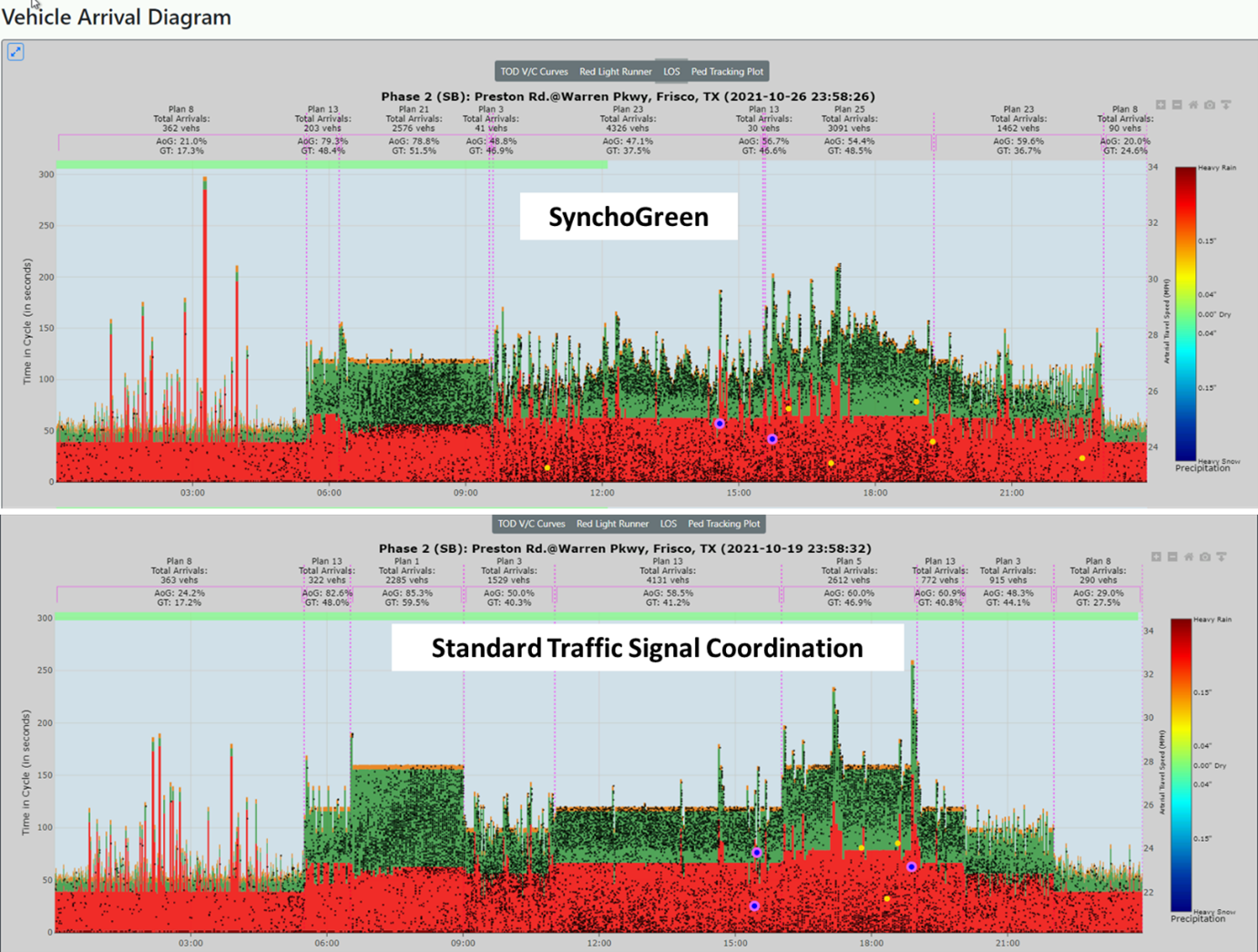
Development and Evaluation of Wi-Fi Highway Performance Evaluation System on Highways, $180,000 PI, 2018~2019
Sponsor: Mississippi Department of Transportation
PI: Dr. Taylor Li
Description: Mississippi DOT awarded this project to Dr. Li’s team to evaluate the Wi-Fi Travel Time Estimation System, developed by Dr. Li. The Wi-Fi sniffing sensors were installed at five intersections of Highway 12 in Starkville, Mississippi. The deliverables of this project include a travel time estimation system based on Wi-Fi MAC capturing and a light ATSPM system which is the prototype of the big-data-driven ATSPM system, UTA-In-Motion (UTAIM). The architecture well reflects the papalism to avoid expensive enterprise database for agencies to scale up the deployment.

Research in Big Data and AI
Explore the potential of Internet-connected vehicle data (ICV data) in travel demand modeling, ITS data fusion and congestion management, $55,000. 2021~ 2022
Sponsor: North Central Texas Council of Government (NCTCOG)
PI: Dr. Taylor Li
Description: Dr. Li’s team helped NCTOCG better understand the characteristics of connected vehicle data and explored the data’s potential in travel demand modeling.
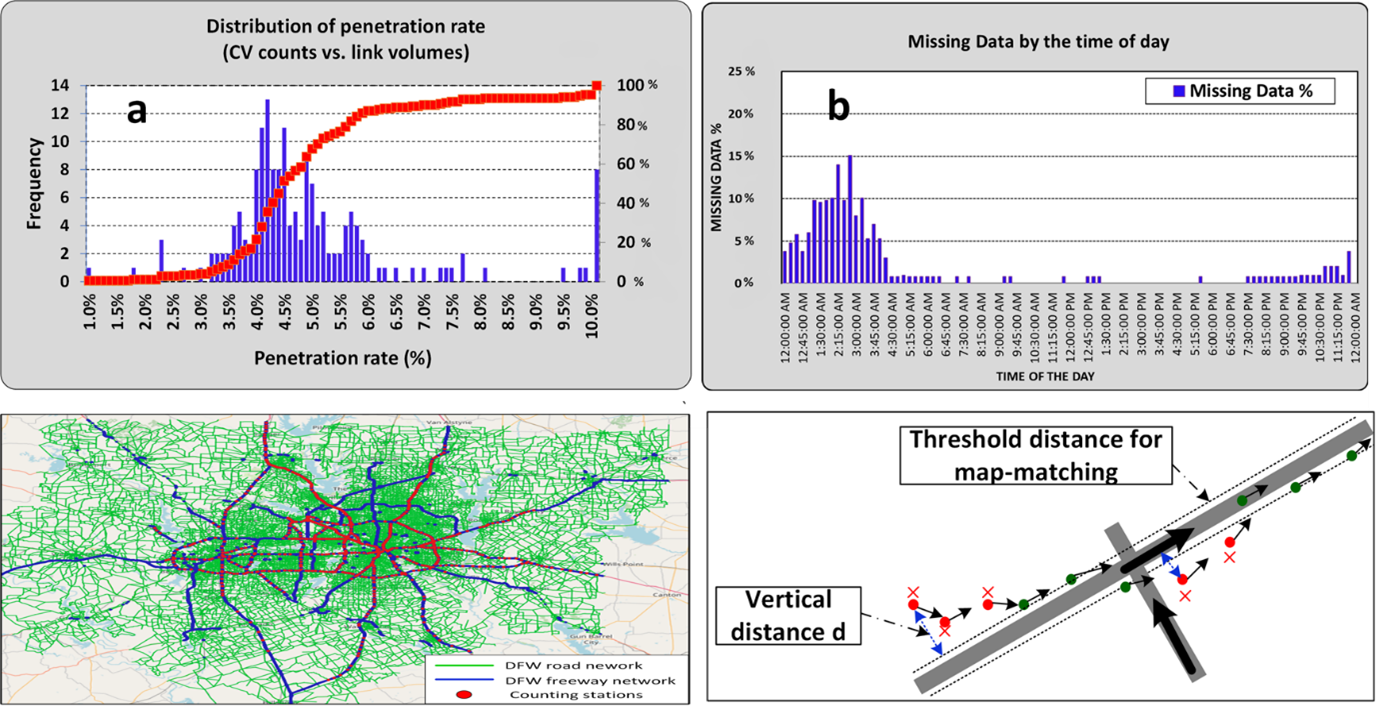
Embracing emerging Internet-based traffic big data in smart city applications to improve transportation systems efficiency, safety and equity, $214,673.56, 2021-2022
Sponsor: USDOT CTEDD UTC
PI: Dr. Taylor Li; Co-PI: Dr. Qisheng Pan (UTA)
Description: In this project, we investigated the spatio-temporal characteristics of commercial connected vehicle data. The commercial connected vehicle data, also referred to as internet-based connected vehicle data or just connected vehicle data. In this project, a highly efficient and parallel/distributed data processing framework was established. Using the map-matched CV data and 100% link counts, a DNN estimation model was trained to estimate all link counts of freeway networks (input: CV link counts; output: time-dependent estimated 100% link counts)
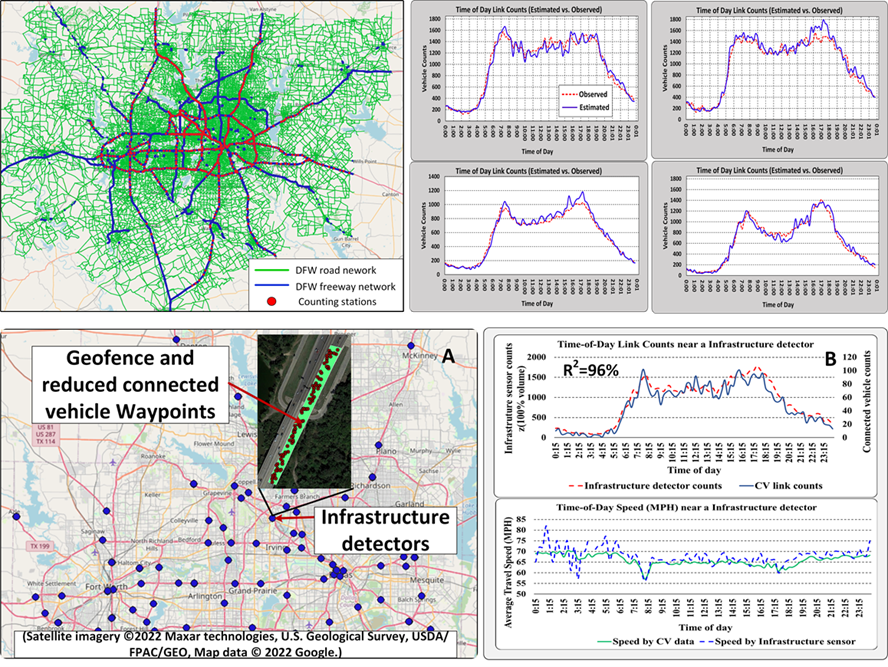
Exploring a Novel Public-Private-Partnership Data Sharing Policy Through a Collaborative Arterial Traffic Management System, $254,748.14, 2020 - 2021
Sponsor: USDOT CTEDD UTC
PI: Dr. Taylor Li; Co-PI: Dr. Michael Hunter (Georgia Tech)
Description: The research conducted at UTA focused on how to integrate traditional traffic data from agencies (e.g., aggregated counts, high-res signal logs, etc.) with emerging mobility data like commercial vehicle trajectories. UTA subscribed the vehicle trajectories in the Dallas-Fort-Worth area for a year, representing 3%-6% of all vehicles. Through data fusion, we provided novel traffic performance both on freeways and arterials. In particular, based on high-res traffic signal logs and vehicle trajectories, the ACTIONLAB designed and automated generated the first ground truth time-space diagram along an arterial under actuated traffic signal coordination. Several probe-based MOEs were also published.
